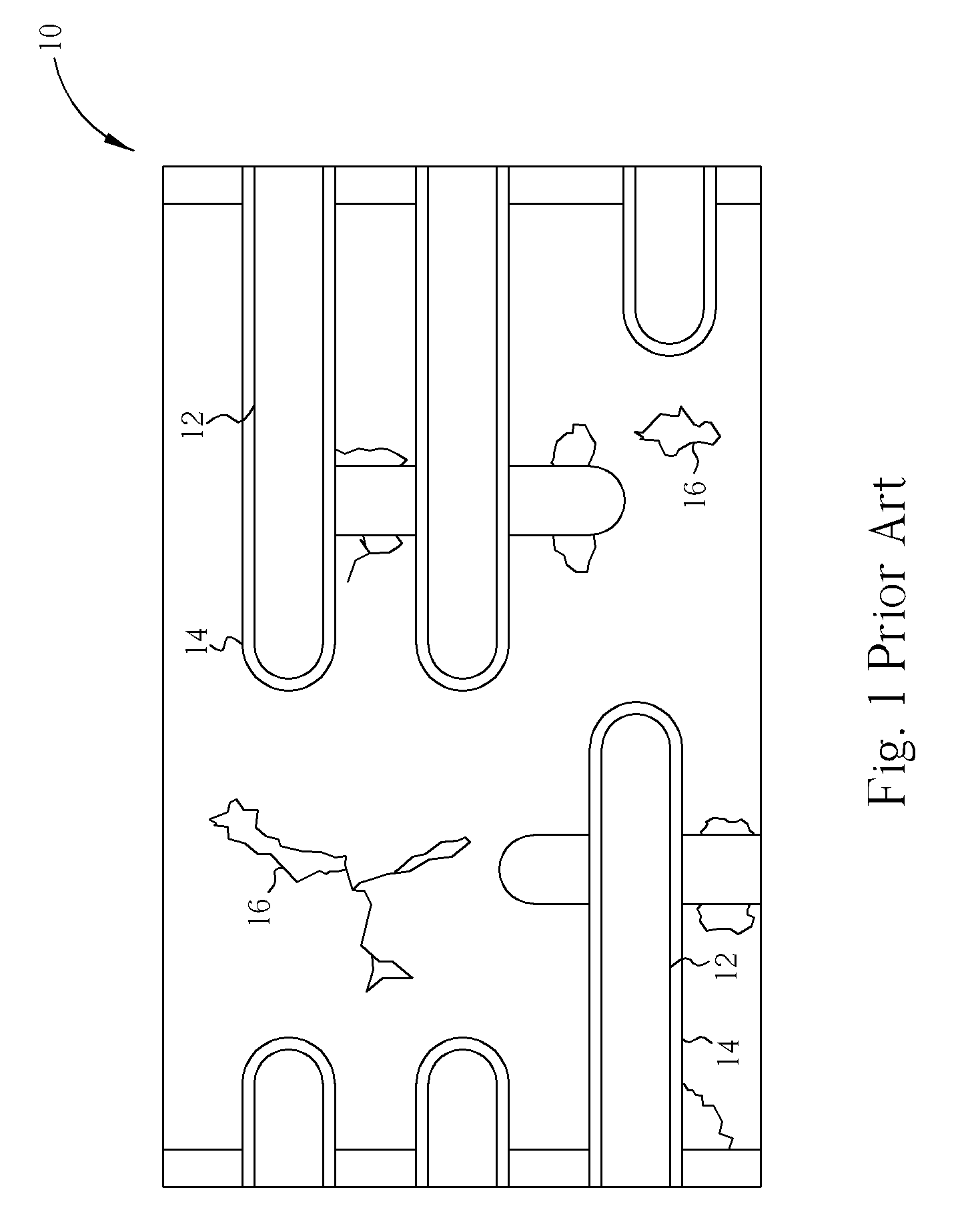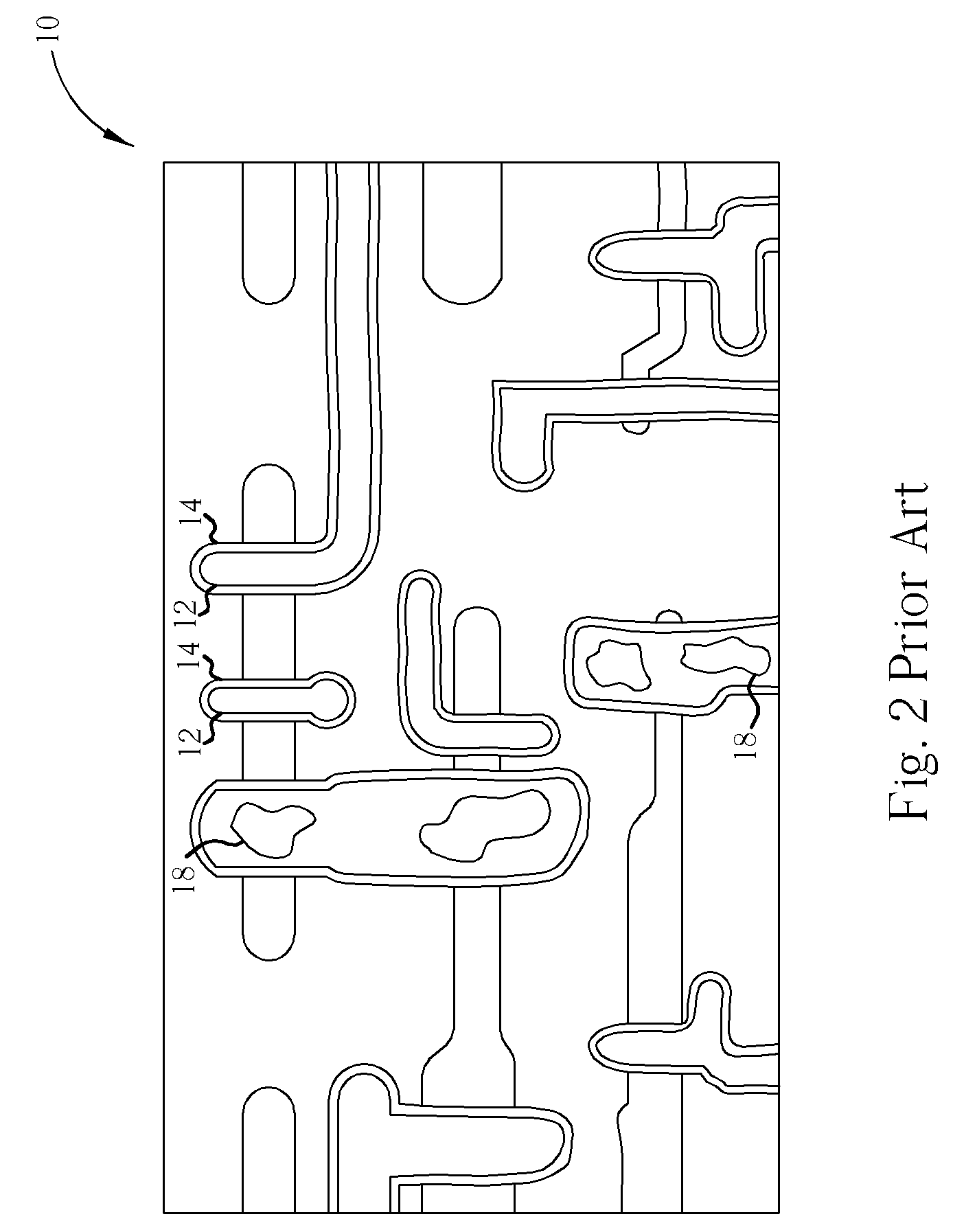Method of forming a nickel platinum silicide
a technology of nickel platinum and silicide, which is applied in the direction of basic electric elements, semiconductor/solid-state device manufacturing, electric devices, etc., can solve the problems of platinum residues and difficult etching
- Summary
- Abstract
- Description
- Claims
- Application Information
AI Technical Summary
Benefits of technology
Problems solved by technology
Method used
Image
Examples
Embodiment Construction
[0017] Referring to FIGS. 3-7, FIGS. 3-7 are schematic diagrams of a method of forming a nickel platinum silicide according to the present invention. As shown in FIG. 3, a substrate 10, such as a silicon substrate, is provided. An oxide layer 111 is formed on the substrate 10, at least one silicon device 12, such as a polysilicon gate electrode, is formed on the oxide layer 11, and a spacer 13 is formed on either side of the silicon device 12. In a better embodiment of the present invention, the silicon device 12 is not limited to the gate electrode. The silicon device 12 may include a source / drain region formed on the substrate 10, or include both of the gate electrode and the source / drain region.
[0018] As shown in FIG. 4, an alloy layer 15, such as a nickel platinum alloy layer, is formed on the substrate 10 and contacts to the exposed surface of the silicon device 12. In other embodiments of the present invention, the alloy layer 15 may be other alloy having platinum, and the pe...
PUM
| Property | Measurement | Unit |
|---|---|---|
| thickness | aaaaa | aaaaa |
| resistance | aaaaa | aaaaa |
| electrical resistivity | aaaaa | aaaaa |
Abstract
Description
Claims
Application Information
 Login to View More
Login to View More - R&D
- Intellectual Property
- Life Sciences
- Materials
- Tech Scout
- Unparalleled Data Quality
- Higher Quality Content
- 60% Fewer Hallucinations
Browse by: Latest US Patents, China's latest patents, Technical Efficacy Thesaurus, Application Domain, Technology Topic, Popular Technical Reports.
© 2025 PatSnap. All rights reserved.Legal|Privacy policy|Modern Slavery Act Transparency Statement|Sitemap|About US| Contact US: help@patsnap.com



